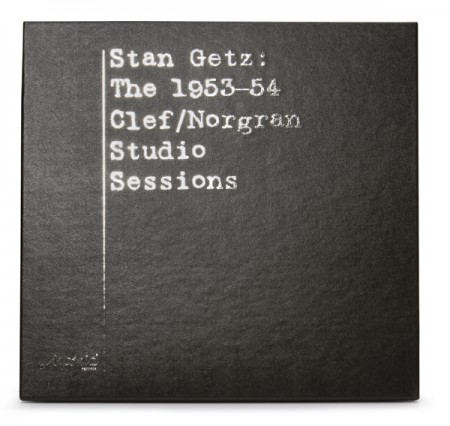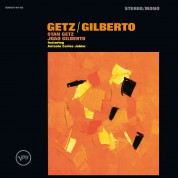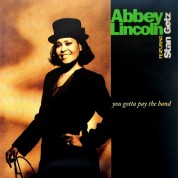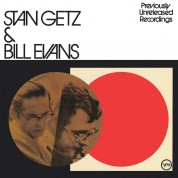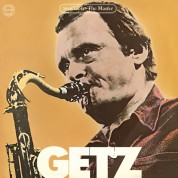
The 1953-54 Norgran Studio Sessions - Plak
Tükendi
Bu Ürün Stoklarımıza Girince Haberdar Olmak İster Misiniz?
(+) Stoklara Girince Haber Ver
(+) Stoklara Girince Haber Ver
Ürün Hakkında
Barkod: 8698540802301
, Katalog No: Mosaic Records MRLP-3003 , Firma: Mosaic Records
, Yayınlanma Tarihi:
19 Ekim 2011
Format Türü: Plak, Format: 4 LP, Gramaj: 180 gr., RPM: 33 rpm.
ENGLISH
<div><b>You May Never See This Again</b></div><div><br></div><div>Gaps. We hate them. We admit it, we’re completists, and we can’t tolerate inaccurate personnel logs, song edits imposed on artists, or sessions split up over scattered LPs. We’re compelled to jump in and fix the errors and re-create mis-handled recording dates.</div><div><br></div><div>Our Stan Getz Quintet box with Jimmy Raney – one of Mosaic’s earliest sets and out of print nearly 20 years -- was an example of our efforts to clean-up an important body of music that over time had been re-issued haphazardly, and with substandard sound. More recently, when we learned that Getz’s Norgran Studio recordings were coming out on CD, we thought: - shouldn’t LP enthusiasts get the Clef/Norgran set in full, sumptuous Mosaic editions, on 180-gram audiophile LP?</div><div><br></div><div>Chronologically, these sessions for Norman Granz fell just after the quintet dates with Raney, before Getz had risen to the dizzying heights of extreme popularity and when he was still basking in the glow of his stint as part of Woody Herman’s Four Brothers saxophone section. Released on the Clef and Norgran labels just at the transition from 10-inch to 12-inch LPs, the tracks got recycled on Verve across many records, were combined with other songs from other dates, or were forgotten entirely.</div><div><br></div><div>Includes Un-released Tracks</div><div><br></div><div>Now, for the first time in decades, they are available again on LP. Three alternate takes buried in the vaults, and a recording of “Pot Luck” initially released on 78 only, appear on LP for the first time ever. It’s a great retrospective of the music of a man who reached an almost unparalleled position in jazz and widespread, international celebrity.</div><div><br></div><div>Getz’s relationship with Norman Granz began almost the night of his first big break as a leader, at a Carnegie Hall tribute to Duke Ellington. Performing an up-tempo version of “Moonlight in Vermont,” his easy-listening hit with Johnny Smith, Getz commanded the attention of jazz fans. With Granz, Getz would prove to be highly prolific. And the music? Some of the finest he would make in his career.</div><div><br></div><div>As a child, Getz would practice up to eight hours a day, and he even tried to drop out of school to pursue music full time. He had to re-enroll, at least until the age of 16 when he joined Jack Teagarden’s band. Other bands, including Woody Herman’s, would follow, but Getz was a leader from the time he turned 23.</div><div><br></div><div>Born the year Lester Young was striking out on his own, he created a modern version of his idol’s innovations on tenor saxophone. His touch was delicate, intimate, and caressing, but there was more drive.</div><div><br></div><div>Influenced a Generation</div><div><br></div><div>While his technical mastery of the instrument was second to none, Getz avoided the showy excesses of bebop and remained true to his roots with a lyrical approach and a coy manner of dragging the beat. He would become an influence himself on a generation of musicians seduced by the “cool” jazz movement -- the reaction to bop.</div><div><br></div><div>The group on these Norgran sessions was a real working band, and valve trombonist Bob Brookmeyer’s soloing ability was up to the task of matching Getz’s standards. His musical pairing with Brookmeyer was one of those inspired arrangements that produced exceptional music. Brookmeyer’s tone was warm and dry, like Getz’s, but the blend they created was only partially about the sonic affinity they shared. They were entirely on the same wavelength when it came to developing and expressing musical ideas – almost like the same guy picking up a different instrument. Credit Getz’s personal sound and free-flowing musical ideas for what identifies this music, but not without equal credit to the byplay with Brookmeyer.</div><div><br></div><div>The quintet of this era also included the excellent John Williams on piano, and briefly after Brookmeyer left to join Gerry Mulligan, Tony Fruscella on trumpet. Drummer Al Levitt or Frank Isola and bassist Bill Crow, Teddy Kotick or Bill Anthony round out the line-up. Our set also includes an excellent quartet date with Jimmy Rowles, Bob Whitlock and Max Roach recorded midway through the quintet’s life.</div><div><br></div><div>As was common on Granz projects that often featured highlights of the great American songbook, there are many well-known selections included in this release, such as “It Don’t Mean a Thing (If It Ain’t Got That Swing),” “I’ll Remember April,” “Give Me The Simple Life,” “Willow Weep For Me,” “We’ll Be Together Again” and many more.</div><div><br></div><div>Four LPs comprise our box set, with 26 tracks arranged by session and accompanied by our exclusive Mosaic booklet. It includes an essay by Ashley Kahn with track-by-track analysis and a complete discography. Photos from the era capture the magic as they were making it. . The 180-gram pressings of this 4-LP set were mastered from analog sources using the original Clef/Norgran master tapes for unparalleled sound.</div><div><br></div><div>Much of this music has been unavailable for decades, and to LP buyers, never before released in coherent form. So – we’ve closed another gap. It’s a rare opportunity to hear a young, acknowledged master in top form. Please reserve a copy of this exciting, highly collectible set to avoid a gap in your collection. </div>Katkıda Bulunanlar
|
Bu Ürünler İlginizi Çekebilir

